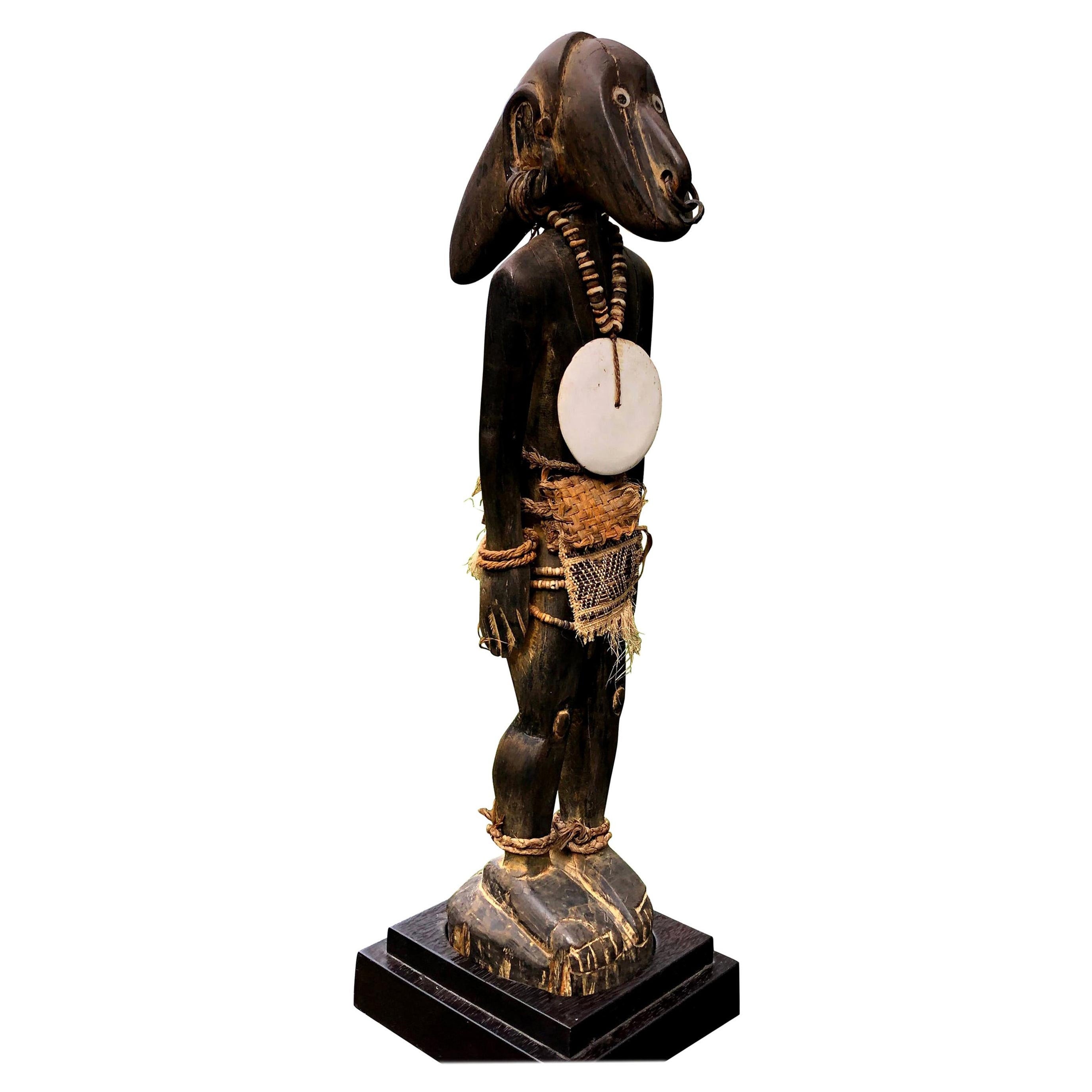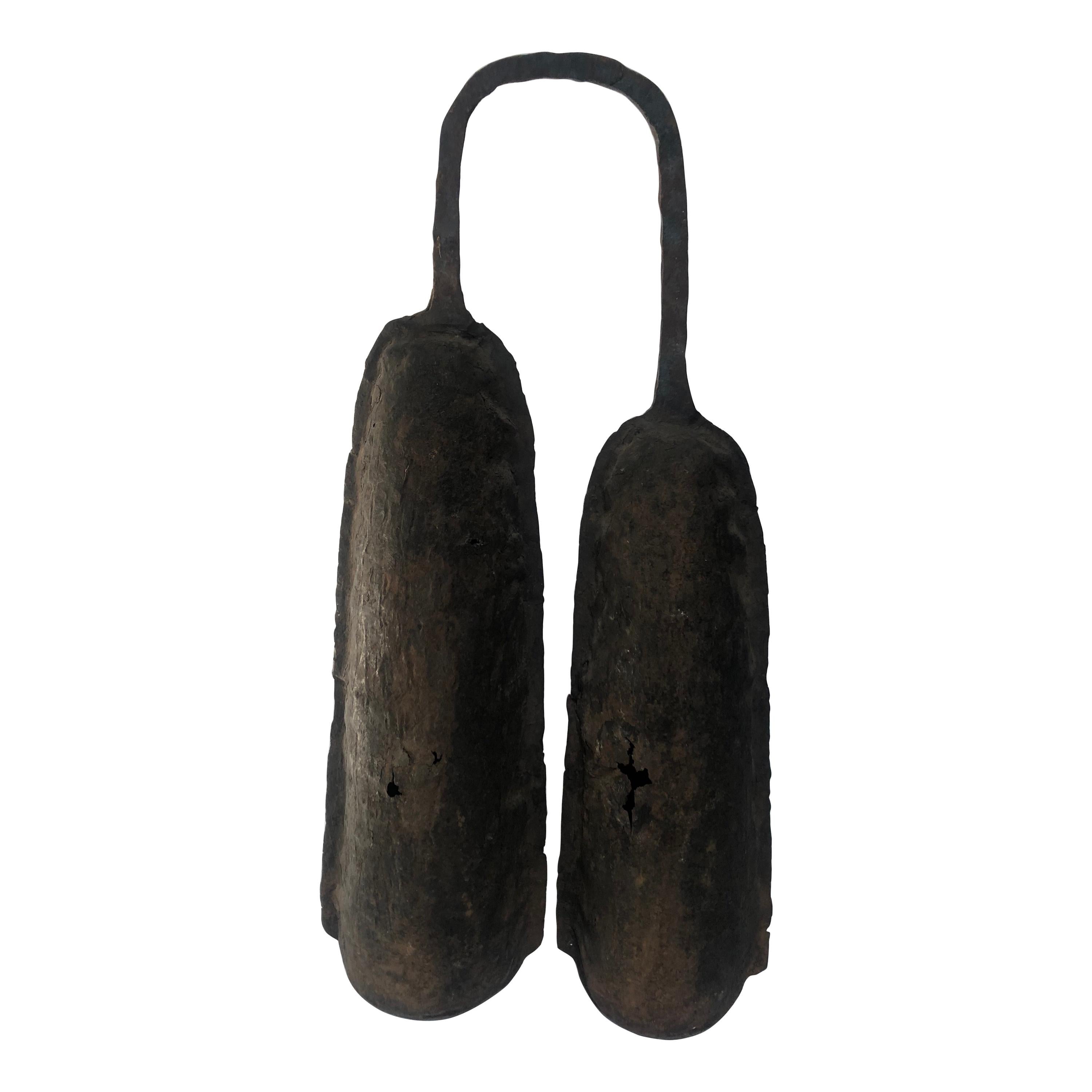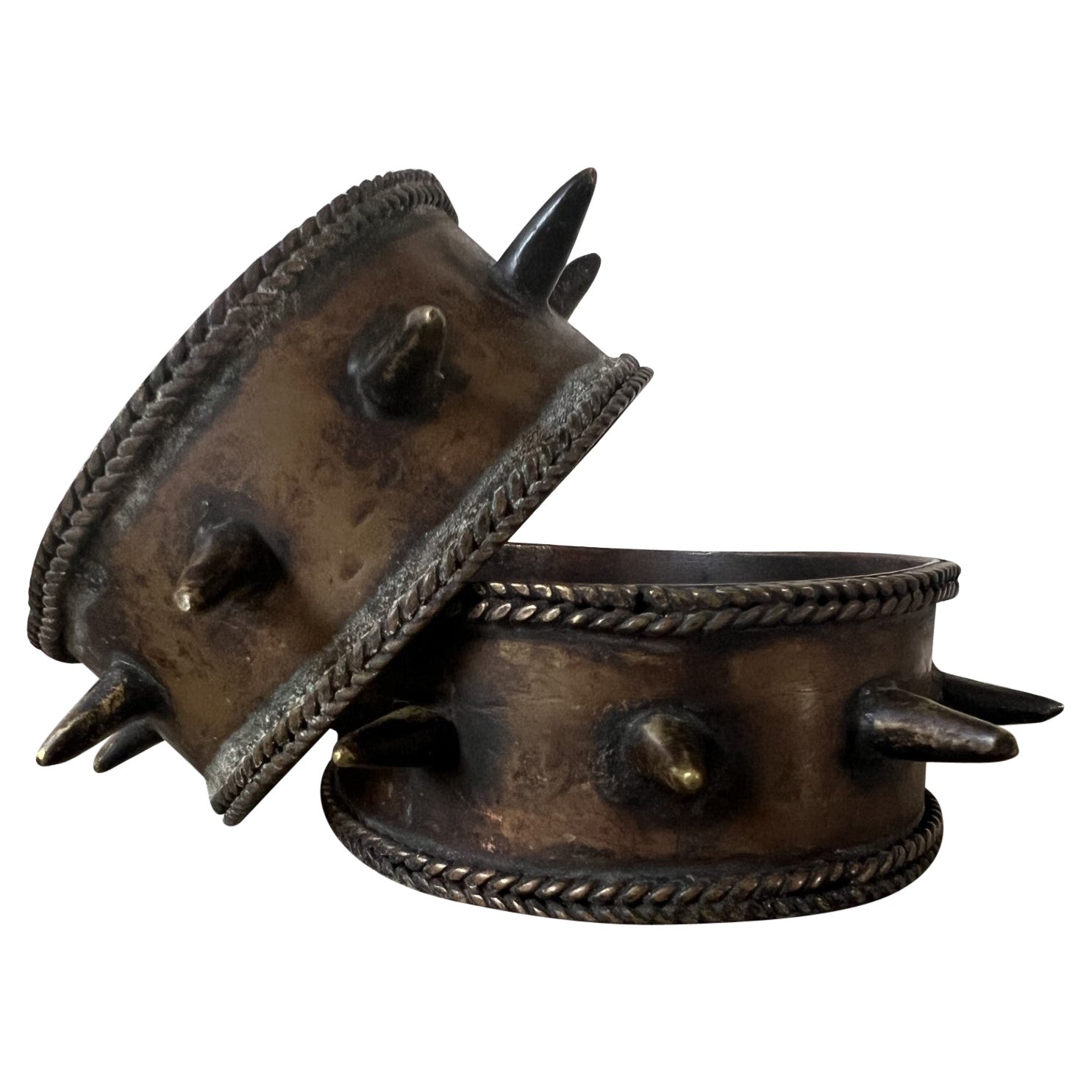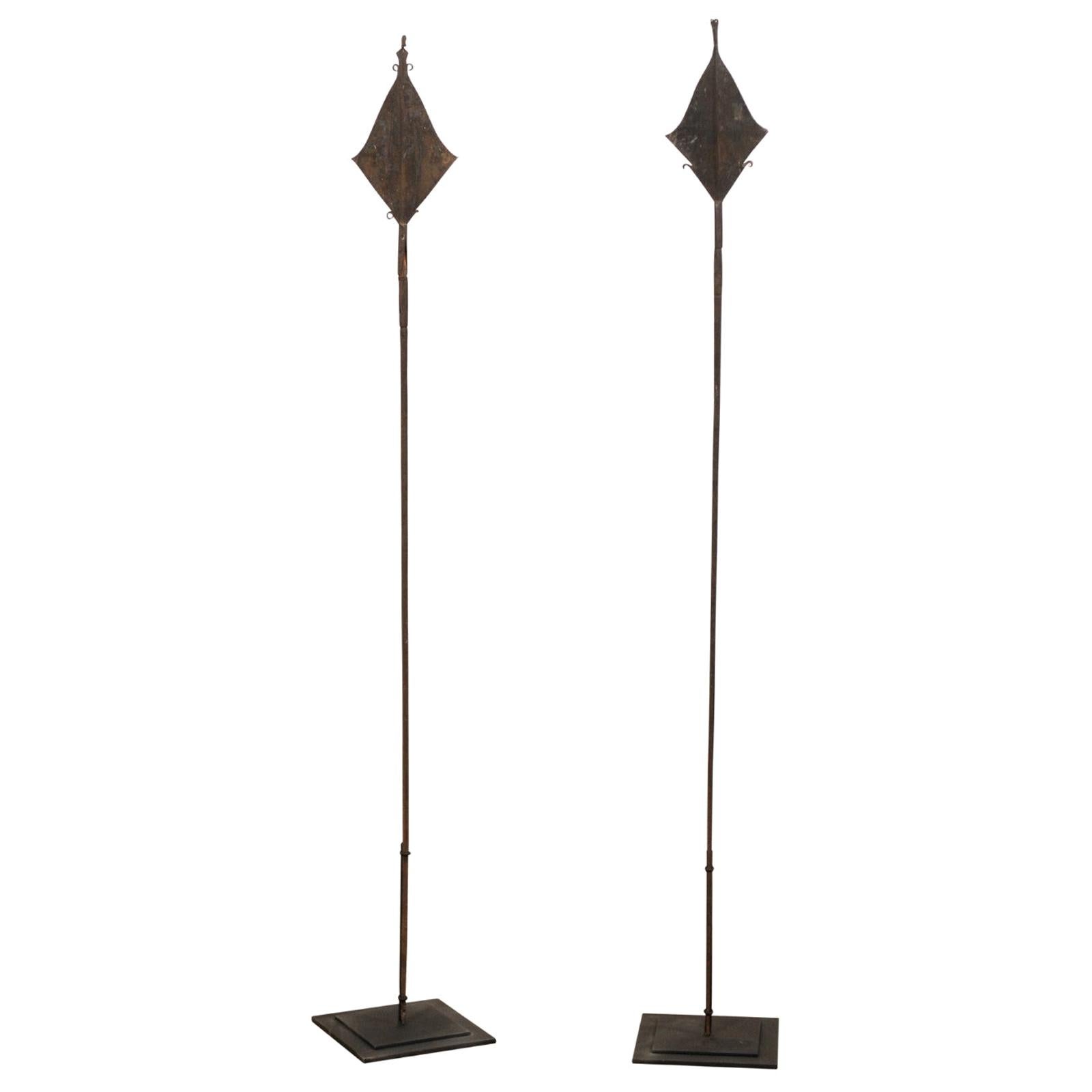Items Similar to A Rare Double Roll of Pacific Solomon Islands, Santa Cruz, Red Feather Currency
Want more images or videos?
Request additional images or videos from the seller
A Rare Double Roll of Pacific Solomon Islands, Santa Cruz, Red Feather Currency
About the Item
A Rare Double Roll of Pacific Solomon Islands, Santa Cruz, Red Feather Currency ‘Tevau’
Plant fibre, bark strips, red bird feathers, small shells, glass beads
Solomon Islands
19th Century
Size:
approx: 45cm high, 80cm wide, 6.5cm deep (height with stand approx: 61cm - 17¾ ins high, 31½ ins wide, 2½ ins deep
61cm high - 24 ins high (on stand)
Provenance:
Acquired directly in 1983 on Temotu Island from Joseph Olu, a local Elder / Chief, whose family had owned the ‘tevau’ for generations
Ex Private collection
These remarkable forms of Pacific Island currency are made of elaborate coils of red feathers taken from the scarlet honey-eater (Myzomela Cardinalis) and were the basis for a trading network between the neighbouring islands of the Solomons. In Polynesian societies the colour red was significant, it was the colour of the gods, used for the personal adornment of chiefs who believed they were the embodiment of the gods. The only source of a permanent bright red colour came from the feathers of certain birds and particularly brilliant red feathers are found on the scarlet honeyeater.
Today with modern life dominated by coins, banknotes, cheques and credit cards it is difficult to understand how societies could function without conventional money. However, alternative forms of currency were once widespread throughout the world. Routine daily transactions relied on barter; a fisherman would exchange a few fish with a farmer for some of his crop, but bartering systems don’t work when you want to buy in quantity or obtain something of exceptional value. Thus, in the Solomon Islands the precious rolls of red feathers acted like a pile of banknotes or a large cheque, enabling pigs to be purchased for a feast day, or for a wife to be bought, with the whole community recognising these exchanges as being of great and permanent value.
As both metal ores and fossil coal deposits are not found in the Pacific a currency based on metal coins did not develop. Alternative currencies based on objects made from scarce natural resources that took a great deal of time and skill to make were developed, of which the Santa Cruz red feathers money is the most intricate and spectacular.
- Dimensions:Height: 17.75 in (45.09 cm)Width: 31.5 in (80.01 cm)Depth: 2.5 in (6.35 cm)
- Materials and Techniques:
- Place of Origin:
- Period:
- Date of Manufacture:19th Century
- Condition:Wear consistent with age and use. Minor losses.
- Seller Location:London, GB
- Reference Number:1stDibs: LU9363239516412
About the Seller
No Reviews Yet
Vetted Seller
These experienced sellers undergo a comprehensive evaluation by our team of in-house experts.
Established in 1989
1stDibs seller since 2023
- ShippingRetrieving quote...Ships From: London, United Kingdom
- Return PolicyA return for this item may be initiated within 14 days of delivery.
More From This SellerView All
- A Rare Anthropomorphic Tsonga HeadrestLocated in London, GBA Rare Anthropomorphic Tsonga Headrest An old paper label: ‘African Pillow Bt. Webster. Sep 1897. P.’ Fine colour and patina through use Wood, pigment, paper label Zimbabwe 19th...Category
Antique 19th Century Zimbabwean Tribal Art
MaterialsWood, Paper
- A Rare Wood Ear OrnamentLocated in London, GBA Rare Wood Ear Ornament With old collectors label ‘Ear Wood. Paraquay’ Wood Paraguay 19th Century Size: 6cm dia., 3.5cm deep - 2¼ ins dia., 1¼ ins deep Published: Steven Phe...Category
Antique 19th Century Paraguayan Tribal Art
MaterialsWood
- A Very Rare Long Maori Paddle ‘Hoe’Located in London, GBA Very Rare Long Maori Paddle ‘Hoe’ Superb colour and patina Wood Maori / New Zealand Late 18th / early 19th Century Size: 217cm long - 85½ ins long Provenance: W.D. Webster, B...Category
Antique Late 18th Century New Zealand Tribal Art
MaterialsWood
- A Rare and Exceptional Carved Headrest ‘Kali Hahapo’Located in London, GBA Rare and Exceptional Carved Headrest ‘Kali Hahapo’ Excellent colour and patina Wood, sennet (coconut fibre), glass beads Tonga Late 18th / Early 19th Century SIZE: 19cm high, 5...Category
Antique Early 19th Century Tongan Tribal Art
MaterialsNatural Fiber, Glass, Wood, Coconut
- A Fine and Rare Shona Knife and SheathLocated in London, GBA Fine and Rare Shona Knife and Sheath Wood, steel, copper Fine colour and patina Zimabawe / Africa 19th Century Size: 48cm long - 19 ins long (with scabbard) 42.5cm l...Category
Antique 19th Century Zimbabwean Tribal Art
MaterialsCopper, Steel
- A Rare and Finely Carved Egyptian Wooden HeadrestLocated in London, GBA Rare and Finely Carved Egyptian Wooden Headrest with a Carved Head to both Sides Representing the God ‘Bes’ (Protector of the Homestead) above Carved...Category
Antique 15th Century and Earlier Egyptian Tribal Art
MaterialsWood
You May Also Like
- Solomon Islands Santa Cruz Hand Carved Conical Head "Duka" Figure, 1930sLocated in South Burlington, VTOriginally collected in the Solomon Islands in 1938, this one of a kind treasure from the south pacific comes from a private oceanic collection. This is a Solomon Islands Santa Cruz hand carved figure called a Duka, circa 1930s. It was carved in an extremely hard native wood and features a finely carved, unusual extended conical head, a handwoven loin cloth and turmeric encrustation. For your convenience, many of our photographs were taken in natural day light which accurately illuminate surface areas depicting original dark patina that you would expect from an important early carving such as this one. We will include a complimentary custom wood display base that you see photographed. Dimensions: 21.25 inches high Provenance: collected in l938 and originally acquired by a visiting French collecting tourist in the Solomon Islands then to dealer and Texas collector and to our private collection in year 2000 so could have been a specially crafted fine 1930s tourist sculpture piece for the visiting French tourist. History: Duka sculpture from Nendo Island, politically part of the Solomon Islands, is distinctive, and only a limited number of works have been documented. The conical extension at the back of the head represents a man's hairstyle. Called abe, its construction and shape was a symbol of wealth and high social status, and for older men, it also served the practical purpose of covering bald spots. All Nendo figure refer to deities or supernatural beings (Ellis: 2009, pp. 78-85) Auction sale: Bonhams Auctions April 28, 2015 sale. Exceptional Lime Container...Category
Early 20th Century Solomon Islands Tribal Tribal Art
MaterialsTapestry, Wood
- 1940s Double Gong Iron CurrencyLocated in Dallas, TX1940s double gong iron African Currency.Category
Vintage 1940s African Tribal Art
MaterialsIron
- Shell Plaque (Barava) from Solomon Islands, 19th CenturyLocated in NICE, FRObjects crafted from the shell of the giant Tridacna clam, also known as the fossilized giant clam, held great value among numerous Melanesian peoples. The artistry of working with f...Category
Antique 19th Century Solomon Islands Tribal Tribal Art
MaterialsShell
- Collection of Burkina Faso CurrencyLocated in Atlanta, GAA collection of Burkina Faso currency from the mid-20th century. This assortment of three vintage African ritual iron snakes effigies originate from the L...Category
Mid-20th Century Burkinabe Tribal Art
MaterialsIron
- Pair of African Currency CuffsLocated in Chicago, ILAfrican currency bracelet made of bronze, with a rich patina.Category
Early 20th Century Tribal Art
MaterialsBrass
- Pair of African Spear Currencies on StandsLocated in Atlanta, GAThis is a pair of vintage African spear currencies from the Mbole peoples, Democratic Republic of Congo which are nicely presented upon custom m...Category
20th Century Congolese Tribal Tribal Art
MaterialsMetal





